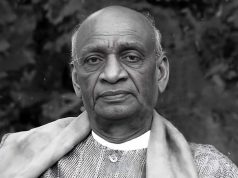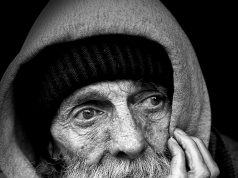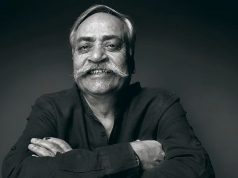 By: Ganesh Saili
By: Ganesh Saili
When I look back at the first rungs of my life’s ladder, I see some of those who taught me the ‘how’ of holding a camera. Foremost amongst them is Raymond Louis Steiner, who arrived from Baton Rouge, Louisiana, floating on whispers that he had cut his teeth alongside Steven Spielberg in the iconic film The Duel.
Thank you, Raymond, for being generous in letting me fiddle around with your spring-wound made-in-Nippon wide-lux camera. Thank you for teaching me the magic of shutter speed and aperture. I have walked with your gift beside me all the days of my life.
In 1983 Maya and Victor Banerjee came up the hill accompanying Lekh Tandon to shoot Dusri Dulhan. They fell in love with a gingerbread cottage called the Parsonage along the Upper Chakkar.

‘Come with us!’ Victor sai after he nominated me to shoot stills for a documentary made for the Indian Railways called Where No Journeys End. We came back with picture-book-perfect images of India, from Kashmir to Kanyakumari, and from Haflong to Jaisalmer. Around the time, publisher Pramod Kapoor of Roli Books, who lived next door in St Asaph, saw the pictures to produce my first coffee-table book titled A Passage Through India.
Then followed two decades of teaching photography, where, unfailingly, the first question was: ‘What camera should I get?’
I wish they had already invented a one-size-fits-all camera! I just nodded my head, trying to look profound, waffling: ‘What’s your budget?’ Or: ‘What kind of pictures do you want to take?’
It gave me time to catch my breath, as I waffled to come up with an answer.

Who said a camera does not lie? The very act of pressing the shutter release is a subjective decision that answers a myriad of questions like: Why do you want this picture? What will the impression be? How do you best record this moment? What do you want out of this image? Anything more would wreck the romance of a shutterbug.
‘All GAS,’ said Amit Agarwal, (Haryana 2003) when I last met him.
‘GAS? What’s that?’
‘Afflicts the best of us – Gadget Acquisition Syndrome!’
Of course, technology helps, but it’s what you do with the technology that truly matters. Study great pictures and learn to make your own. Find your Third Eye as you move along the lesser–travelled path where there are no rules. Who can teach the ‘how-to’ of writing Hamlet or The Seven Pillars of Wisdom?
Wise men tell you that every picture has a main light, just as each meal has a main dish. The rest are but trimmings on the side.
‘How can one develop this instinct or impulse?’
It might break your heart but, truthfully, maybe never! You may never see forms like my gifted friend Peter Lugg cannot see colours on a billiard table because he is colour-blind.
‘Go look for images!’ I told my charges.
And there have been times when they have come back to make me proud. Take Nawin Sona Natesan (Maharashtra 2000) for instance: he came back from with his pictures of forms and reflections in glass-fronted buildings; or the true fakir Keshav Chandra (AGMUT 1995), who captured the magic of solitude; or Himani Pande (Jharkhand 1998), who took stunning pictures of Jharkhand as she chose to isolate themes by removing the excess. Her work reminds me of the great genius Michelangelo who said: ‘The sculpture is already complete within the marble block, before I start my work. It is already there, I just have to chisel away the superfluous material.’
And to me, as a photographer, that remains the essence. In this field, less is more. Get rid of what is irrelevant: a russet leaf or a fraying pine cone may sum up autumn better than anything else. You see it in the word images of my friend, the author Ruskin Bond. He too would have made a great photographer but Fate intervened. As he watched the nearby school sports, a thief broke into Maplewood Cottage and stole his twin-lens Rolleiflex.
‘After that, I gave up,’ he muses. ‘I only hope that the thief turned into a good photographer!’
Ganesh Saili born and home-grown in the hills belongs to those select few whose words are illustrated by their pictures. Author of two dozen books, some translated into twenty languages, his work has found recognition worldwide.








